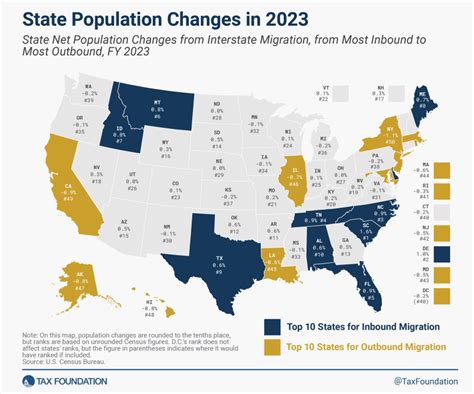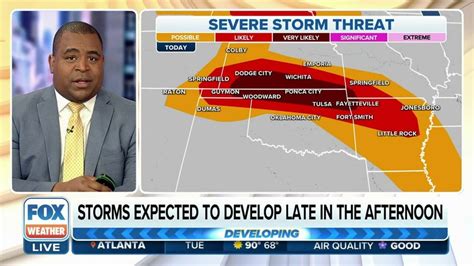
Denver is experiencing a significant outflow of residents, ranking among the top 10 cities in the United States with the highest outbound moving activity, according to recent data from PODS Moving & Storage. This trend indicates a notable shift in Denver’s population dynamics, driven by factors such as rising housing costs, changing job markets, and lifestyle preferences.
Denver’s prominence on the list of top outbound cities highlights a broader trend of population movement across the country, with many individuals and families seeking more affordable living options and different opportunities in other regions. PODS data, which tracks moving trends based on container usage, provides a real-time snapshot of these shifts. While the data doesn’t pinpoint exact reasons for each move, it offers valuable insights into the areas experiencing the most significant population changes.
Key Findings
The PODS Moving & Storage data reveals that Denver is not an isolated case. Several other metropolitan areas are also experiencing high outbound activity. However, Denver’s inclusion in the top 10 underscores the challenges and changes affecting the city. The data is derived from PODS customer activity, reflecting both long-distance and local moves.
“While specific motivations vary among individuals, the overarching trend suggests that affordability and lifestyle considerations are major drivers behind the exodus from Denver,” the PODS report noted.
Factors Contributing to Denver’s Exodus
Several factors are likely contributing to Denver’s outbound migration. Understanding these drivers is crucial for policymakers, urban planners, and residents alike.
-
Rising Housing Costs: Denver has seen a significant increase in housing prices over the past decade. The median home price in Denver has risen sharply, making it increasingly difficult for potential homebuyers, particularly first-time buyers, to afford property. Rent prices have also increased, contributing to the overall cost of living. “The cost of housing is a major factor,” according to local real estate analysts. “Many people are finding it difficult to justify the expense of living in Denver when compared to other cities with similar job opportunities.”
-
Job Market Dynamics: While Denver boasts a robust job market, competition for positions can be fierce. The tech industry, which has been a major driver of Denver’s growth, has also experienced fluctuations, with some companies downsizing or relocating. This can lead to uncertainty and prompt some residents to seek opportunities in more stable or growing markets.
-
Lifestyle Preferences: Lifestyle considerations also play a role. Some residents may be seeking a quieter, less congested environment, while others may be drawn to cities with different cultural or recreational opportunities. The appeal of smaller towns and rural areas has grown in recent years, as remote work opportunities have expanded, allowing individuals to live and work from anywhere.
-
Increased Cost of Living: Beyond housing, the overall cost of living in Denver has risen, encompassing expenses such as transportation, groceries, and healthcare. This can strain household budgets and prompt residents to seek more affordable locations.
-
Remote Work Opportunities: The rise of remote work has untethered many employees from the need to live near their offices. This flexibility has allowed people to explore living in more affordable areas without sacrificing their careers, contributing to the outflow from Denver.
Demographic Shifts
The outbound migration from Denver is also impacting the city’s demographic composition. While the exact demographic breakdown of those leaving is not specified in the PODS data, anecdotal evidence suggests that younger professionals and families are among those most likely to relocate. This can have long-term implications for Denver’s workforce, economy, and community.
Impact on Denver
The outflow of residents from Denver has several potential impacts on the city:
-
Economic Impact: A shrinking population can lead to a decrease in economic activity, as fewer residents translate to less spending and fewer jobs. This can affect local businesses and the overall tax base of the city.
-
Housing Market Adjustments: While high demand has driven up housing prices, a sustained outflow of residents could lead to a softening of the housing market. This could result in lower home prices and rents, which could benefit those who remain in Denver but could also negatively impact homeowners.
-
Infrastructure and Services: A declining population can also affect the demand for infrastructure and public services. The city may need to adjust its spending and planning to accommodate a smaller population base.
-
Community and Culture: Population shifts can also impact the social fabric and cultural identity of a city. As residents move out, the community may experience changes in its demographics, values, and priorities.
Comparison with Other Cities
While Denver’s outbound migration is noteworthy, it is not unique. Several other cities across the United States are also experiencing similar trends. Factors such as housing affordability, job market dynamics, and lifestyle preferences are driving population shifts nationwide. Cities like San Francisco, New York, and Los Angeles have also seen significant outbound activity in recent years.
PODS Data Methodology
PODS Moving & Storage collects data on moving trends based on the usage of its portable storage containers. The company tracks the origin and destination of containers to identify areas with high inbound and outbound activity. While this data provides valuable insights, it is important to note that it represents only a subset of the overall moving activity and may not capture all population movements.
Expert Opinions
Real estate analysts and urban planners offer varying perspectives on Denver’s outbound migration. Some argue that it is a natural correction after a period of rapid growth, while others express concern about the long-term implications for the city’s economy and vitality.
“Denver has experienced tremendous growth in recent years, and some level of outflow is to be expected as the market adjusts,” says Dr. Emily Carter, an urban planning expert at the University of Colorado Denver. “However, it is important for the city to address the underlying factors driving this trend, such as housing affordability and job opportunities, to ensure sustainable growth in the future.”
Other experts suggest that Denver needs to focus on attracting and retaining talent by investing in education, infrastructure, and quality of life amenities. “Denver has a lot to offer, but it needs to continue to innovate and adapt to meet the changing needs of its residents,” says Mark Johnson, an economist with the Denver Metro Chamber of Commerce.
Efforts to Address the Exodus
Denver’s city government and community leaders are taking steps to address the outbound migration. These efforts include:
-
Affordable Housing Initiatives: The city is investing in affordable housing projects and implementing policies to encourage the development of more affordable units.
-
Economic Development Strategies: Denver is working to attract and retain businesses by offering incentives, investing in infrastructure, and supporting workforce development programs.
-
Quality of Life Improvements: The city is focusing on improving quality of life amenities, such as parks, trails, and cultural attractions, to make Denver a more attractive place to live.
-
Transportation Solutions: Denver is investing in transportation infrastructure, including public transit, bike lanes, and pedestrian improvements, to ease congestion and improve mobility.
Future Outlook
The future of Denver’s population dynamics remains uncertain. While the current outbound migration trend is concerning, the city has a strong foundation and the potential to rebound. By addressing the underlying factors driving the exodus and investing in its future, Denver can attract and retain residents and maintain its position as a vibrant and thriving city. The city’s ability to adapt to changing economic conditions, address housing affordability, and enhance its quality of life will be crucial in shaping its future.
Detailed Analysis of Housing Affordability
The escalating cost of housing in Denver is undeniably a primary catalyst for the outward migration. A deeper look into the data reveals specific trends and challenges within the housing market.
-
Median Home Prices: Over the last decade, Denver’s median home price has surged dramatically. According to the Denver Metro Association of Realtors, the median price of a single-family home in Denver reached record highs, far outpacing wage growth. This disparity has made homeownership increasingly unattainable for many residents, particularly younger individuals and families.
-
Rental Market Dynamics: The rental market in Denver has also experienced significant increases. While rent growth has slowed in recent months, it remains high compared to historical averages. The competition for rental units is fierce, and many renters face challenges in finding affordable and suitable housing options.
-
Impact on Different Income Groups: The housing affordability crisis disproportionately affects lower and middle-income households. These groups often struggle to find housing within their budget and may be forced to make difficult choices between housing and other essential expenses.
-
Government Initiatives: The City of Denver has implemented various initiatives to address the affordable housing crisis. These include:
- Inclusionary Zoning: Policies that require developers to include a certain percentage of affordable units in new housing projects.
- Affordable Housing Trust Fund: A dedicated fund that provides financial support for affordable housing development.
- Rental Assistance Programs: Programs that provide rental subsidies to low-income households.
- Density Bonuses: Incentives that allow developers to build more units in exchange for including affordable housing.
-
Challenges and Limitations: Despite these efforts, the affordable housing crisis remains a significant challenge. The demand for affordable housing far exceeds the supply, and government initiatives are often insufficient to meet the needs of the community.
Job Market Analysis and Economic Factors
Denver’s job market, while generally robust, presents its own set of challenges that contribute to the outbound migration.
-
Industry Concentration: Denver’s economy is heavily reliant on certain industries, such as technology, aerospace, and energy. While these industries have driven growth in the past, they can also be susceptible to fluctuations and downturns.
-
Wage Stagnation: Despite the strong job market, wage growth in Denver has not kept pace with the rising cost of living. This has made it difficult for many residents to improve their financial situation and afford housing and other expenses.
-
Competition for Jobs: The influx of new residents to Denver in recent years has led to increased competition for jobs. This can make it more difficult for job seekers to find employment and negotiate higher salaries.
-
Remote Work Impact: The rise of remote work has had a mixed impact on Denver’s job market. While it has allowed some residents to work from anywhere, it has also led to increased competition from workers in other cities and states.
-
Entrepreneurial Opportunities: Denver has a vibrant entrepreneurial ecosystem, with many startups and small businesses. However, starting and running a business in Denver can be challenging due to high costs and regulatory hurdles.
Lifestyle and Quality of Life Considerations
Beyond economic factors, lifestyle and quality of life considerations also play a significant role in Denver’s outbound migration.
-
Urban Sprawl: Denver has experienced significant urban sprawl in recent decades, leading to increased traffic congestion, longer commutes, and a loss of open space.
-
Environmental Concerns: Denver faces environmental challenges such as air pollution, water scarcity, and the impacts of climate change. These concerns can be a factor for residents considering a move to a different location.
-
Access to Outdoor Recreation: While Denver is known for its access to outdoor recreation, the increasing popularity of these activities has led to overcrowding and increased strain on natural resources.
-
Cultural and Social Factors: Some residents may be seeking a different cultural or social environment. Denver’s rapid growth has led to changes in its demographics and community dynamics, which may not appeal to everyone.
-
Political Climate: Political considerations can also play a role in migration decisions. Some residents may be drawn to cities with different political ideologies or policies.
Detailed Demographic Analysis of Outbound Movers
Understanding the demographic profile of those leaving Denver is crucial for developing targeted strategies to address the outbound migration.
-
Age Groups: While specific age data isn’t provided by PODS, it’s reasonable to infer that younger professionals (25-40) and families with young children are likely overrepresented among those leaving. This demographic is often more mobile and may be more willing to relocate for better job opportunities or more affordable housing.
-
Income Levels: Lower to middle-income households are likely more affected by rising housing costs and may be more inclined to move to areas with lower costs of living. However, higher-income households may also choose to relocate for reasons such as retirement, lifestyle changes, or new job opportunities.
-
Occupations: Certain occupations may be more prone to relocation. For example, individuals in industries with remote work options may be more likely to move to more affordable areas. Similarly, those in industries with limited job opportunities in Denver may seek employment elsewhere.
-
Education Levels: The impact of education levels on outbound migration is complex. While higher education may lead to better job opportunities, it can also increase the cost of living. Individuals with higher education levels may be more mobile and have more options for relocation.
-
Racial and Ethnic Composition: Analyzing the racial and ethnic composition of outbound movers can provide insights into disparities in housing affordability, job opportunities, and access to resources. It is important to ensure that all residents have equal opportunities to thrive in Denver.
Comparative Analysis with Other Metropolitan Areas
Examining the experiences of other metropolitan areas facing similar challenges can provide valuable lessons for Denver.
-
San Francisco Bay Area: The San Francisco Bay Area has experienced significant outbound migration in recent years, driven by high housing costs, traffic congestion, and a competitive job market. The region has implemented various strategies to address these challenges, including affordable housing initiatives, transportation improvements, and economic development programs.
-
New York City: New York City has also seen an outflow of residents, particularly during the COVID-19 pandemic. Factors such as high living costs, crime rates, and the shift to remote work have contributed to this trend. The city is working to revitalize its economy, improve public safety, and enhance its quality of life.
-
Los Angeles: Los Angeles faces similar challenges to Denver, including high housing costs, traffic congestion, and environmental concerns. The city has implemented various measures to address these issues, such as increasing housing density, investing in public transit, and promoting sustainable development.
-
Seattle: Seattle has experienced rapid growth in recent years, leading to increased housing costs and competition for jobs. The city is working to address these challenges through affordable housing initiatives, transportation investments, and workforce development programs.
Policy Recommendations for Denver
Based on the analysis of Denver’s outbound migration and the experiences of other cities, the following policy recommendations are offered:
-
Increase the Supply of Affordable Housing:
- Implement aggressive inclusionary zoning policies.
- Increase funding for the Affordable Housing Trust Fund.
- Streamline the permitting process for affordable housing development.
- Explore innovative housing models such as co-living and micro-units.
-
Promote Transit-Oriented Development:
- Encourage higher-density housing development near transit stations.
- Invest in public transit infrastructure.
- Improve pedestrian and bicycle infrastructure.
- Reduce parking requirements for new developments.
-
Invest in Workforce Development:
- Expand access to job training programs.
- Support apprenticeships and internships.
- Promote entrepreneurship and small business development.
- Attract and retain talent in key industries.
-
Address Environmental Concerns:
- Reduce air pollution through cleaner transportation and energy sources.
- Conserve water resources through efficient irrigation and water management practices.
- Promote sustainable development and green building practices.
- Mitigate the impacts of climate change through adaptation and resilience measures.
-
Enhance Quality of Life Amenities:
- Invest in parks, trails, and open space.
- Support arts and culture organizations.
- Improve public safety and reduce crime rates.
- Promote community engagement and civic participation.
Long-Term Strategies for Sustainable Growth
Addressing Denver’s outbound migration requires a long-term, comprehensive approach that focuses on sustainable growth and equitable development. This includes:
-
Regional Collaboration: Addressing challenges such as housing affordability and transportation requires collaboration among local governments and stakeholders across the Denver metropolitan area.
-
Community Engagement: Engaging residents in the planning and decision-making process is essential for ensuring that policies and programs meet the needs of the community.
-
Data-Driven Decision-Making: Using data and analytics to inform policy decisions and track progress is crucial for achieving desired outcomes.
-
Adaptive Management: Regularly evaluating and adjusting policies and programs based on their effectiveness is essential for adapting to changing conditions.
By implementing these strategies, Denver can create a more affordable, sustainable, and equitable community that attracts and retains residents for generations to come.
FAQ Section:
1. Why is Denver experiencing an exodus of residents?
Denver’s outbound migration is primarily driven by a combination of factors, including rising housing costs, a competitive job market, and lifestyle preferences. The increasing cost of living, particularly housing, makes it difficult for many to afford living in the city, leading them to seek more affordable options elsewhere. Remote work opportunities have also made it easier for people to relocate without sacrificing their careers.
2. What data supports the claim that Denver is experiencing an exodus?
Data from PODS Moving & Storage indicates that Denver is among the top 10 cities in the United States with the highest outbound moving activity. This data tracks the usage of PODS containers for moves, providing a snapshot of population shifts. While it doesn’t capture all moving activity, it serves as a reliable indicator of trends.
3. What impact does this exodus have on Denver?
The outflow of residents can have several impacts on Denver, including potential economic consequences due to reduced spending and a shrinking tax base. The housing market may also soften, leading to lower home prices and rents. Additionally, there could be adjustments needed in infrastructure and public services to accommodate a smaller population. The community and cultural dynamics of the city could also shift as demographics change.
4. What is Denver doing to address the outbound migration?
Denver’s city government and community leaders are implementing various strategies to address the outbound migration. These efforts include investing in affordable housing projects, pursuing economic development strategies to attract and retain businesses, improving quality of life amenities such as parks and transportation, and supporting workforce development programs to enhance job opportunities.
5. How does Denver compare to other cities experiencing similar outbound migration trends?
Denver is not unique in experiencing an outbound migration. Cities like San Francisco, New York, and Los Angeles also face similar challenges due to high housing costs and other factors. Denver can learn from the strategies these cities have implemented to address their own population shifts, such as affordable housing initiatives, transportation improvements, and economic diversification efforts.









